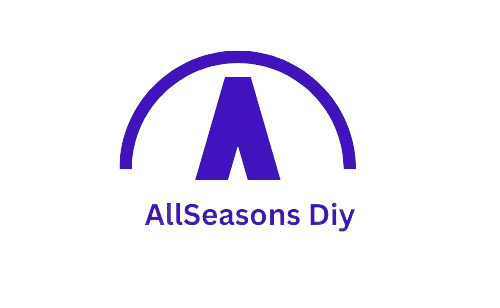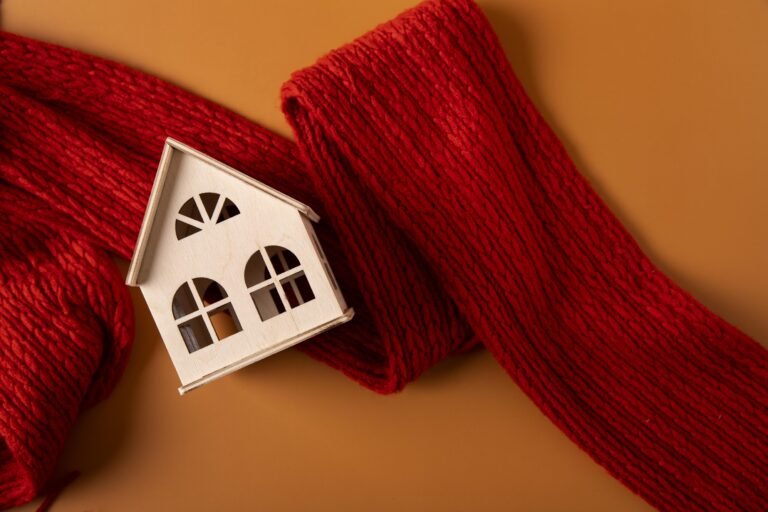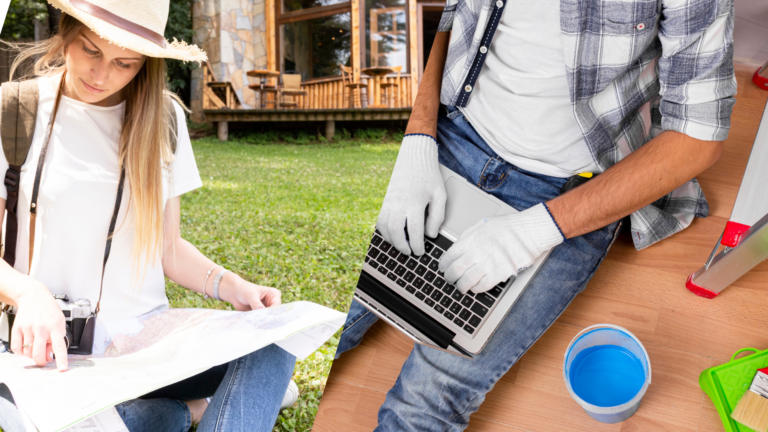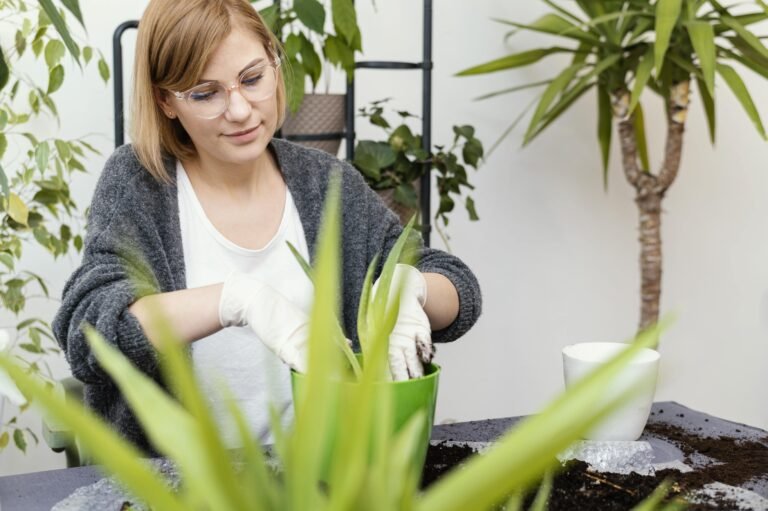Stop Mold Now- Proven Tips for Preventing Mold and Mildew in Your Home!
Mold and mildew aren’t just ugly to look at; they can also harm your and your family’s health. These fungi love damp places and can quickly grow in any wet area of your home. They spread fast and can harm both your health and your house. But don’t worry! With some effective methods, you can stop mold and mildew from spreading and keep your home healthier.
Preventing mold is crucial. By keeping humidity low, ensuring good airflow, and fixing leaks quickly, you can make it harder for mold to grow. This guide will share practical tips and methods to prevent mold and mildew. Whether you’re already dealing with mold or want to stop it before it starts, these tips will give you the information you need to keep your home safe all year.
What is the Mold and Mildew?
Mold and mildew are types of fungi that you can find both inside and outside. Although they are quite similar, they have a few key differences and prefer slightly different growing conditions. Mold usually looks green or black and can appear fuzzy or slimy. It grows on many things, from food to the walls in your house. Mildew, however, usually appears white or gray and grows flat, mainly on damp surfaces like bathroom walls or window ledges.
Both mold and mildew thrive in moist environments and can spread quickly through spores in the air. These spores can easily take root in damp areas, making any wet surface a potential growth spot. Beyond the unpleasant sight and musty odors, mold and mildew can cause significant problems, including structural damage to your home and possible health issues for its inhabitants. These can range from allergies and respiratory issues to more severe health risks, especially for those with compromised immune systems or existing respiratory conditions.
Understanding the nature of these fungi is the first step in effectively preventing their growth and ensuring your home remains a safe, healthy environment free of mold and mildew.
Identifying Mold and Mildew in Your Home
Spotting mold and mildew early is important to stop them before they become a big issue. Here’s how you can recognize these unwanted visitors in your home:
- Visual Signs: Their looks are the easiest way to spot mold or mildew. Mold often appears as irregular spots that can be black, white, green, or even red. It usually looks fuzzy or a bit raised. Mildew starts as powdery or fluffy white patches but can turn brown, black, or yellow over time. You’ll mostly find it in moist places.
- Smell: Mold and mildew usually have a musty, earthy smell, kind of like wet socks or damp wood. This scent can be a clear sign that mold or mildew is around, even if you can’t see it (like behind wallpaper, in basements, or under carpets).
- Health Symptoms: Sometimes, you can tell there’s mold and mildew around because it makes people in your house feel sick. If you or anyone else keeps sneezing, coughing, getting headaches, or having irritated eyes, especially in certain parts of your home, it might mean you have a mold problem.
- Moisture Issues: Mold and mildew often show that there’s a bigger issue with moisture in your house. Look for places that get damp easily, like bathrooms without good airflow, basements that don’t drain well, or areas around windows and pipes that leak. These spots are where mold and mildew love to grow.
To keep your home free from mold and mildew, regularly check these areas that tend to have problems. Use your nose to smell for musty odors and keep an eye out for any changes in color or damage that could mean there’s mold. Dealing with mold and mildew quickly is important to stop them from spreading and to keep your home safe.
Everyday Practices to Prevent Mold
Preventing mold and mildew doesn’t need any special efforts; it just means making some simple, everyday habits part of your routine. Here are important steps that can help stop mold and mildew from growing in your home:
- Control Humidity: Keep the humidity in your home between 30% and 50%. You can do this by using dehumidifiers and air conditioners, especially when it’s very humid. Always check these devices to make sure they’re working well and clean them regularly for the best results.
- Enhance Ventilation: Make sure air moves freely around your home. Use exhaust fans in your kitchen and bathroom to get rid of moist air quickly. Also, ensure that vents from appliances like clothes dryers send the air outside, not into places like the attic or under the house.
- Fix Leaks Promptly: Water leaks are a big cause of mold growth. Regularly look around your house for any signs of leaks and fix them quickly. Pay extra attention to areas like the roof, pipes, windows, and faucets where leaks can often occur.
- Dry Wet Areas Immediately: Mold can start growing within 24 to 48 hours after getting wet. Quickly dry any areas that get wet, like spills on carpets, furniture, or bedding. If your home floods, you might need to throw out water-damaged carpets, bedding, and furniture if they can’t be completely dried.
- Use Mold-Resistant Products: When you’re fixing up or renovating your home, use materials that resist mold. This includes mold-resistant drywall, sheetrock, and paint. These are especially good for areas that tend to be damp, like basements, laundry rooms, and bathrooms.
- Clean Smartly: Make it a habit to clean places where mold often shows up, such as shower curtains, bathroom walls, and window sills. In your bathroom and kitchen, use products that kill mold to keep these areas clean and free of mold.
By making these actions part of your everyday routine, you can help prevent mold and mildew from growing in your home, keeping it healthy and fresh.
What are the Long-Term Mold Prevention Strategies?
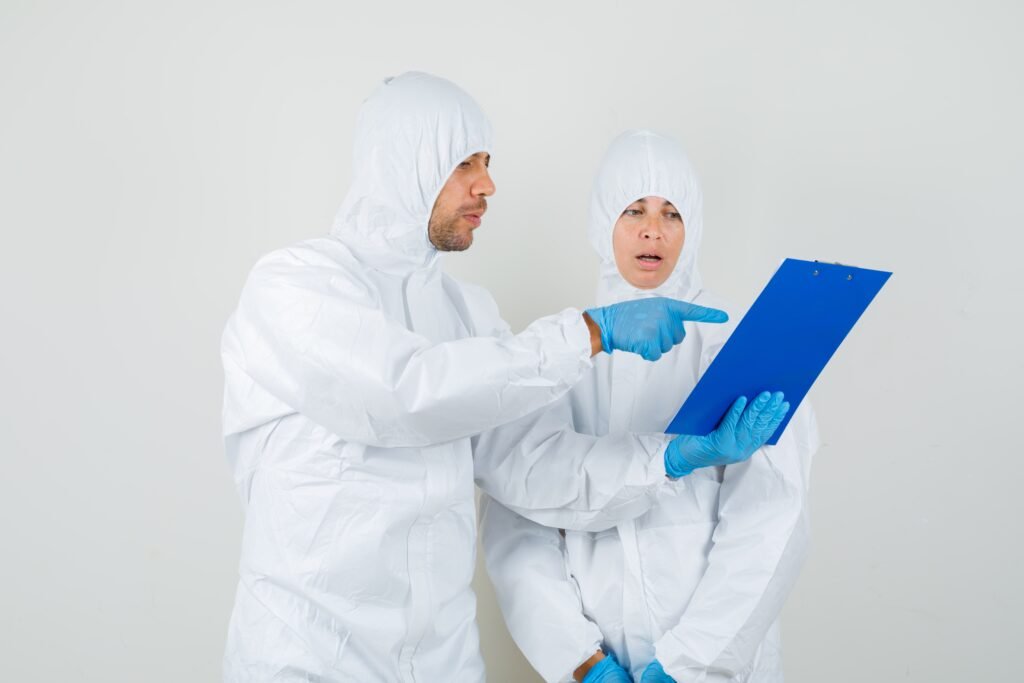
While everyday habits are important for preventing mold, adding long-term strategies to your home maintenance can strengthen your protection against these stubborn fungi. Here are steps you can take for lasting defense:
- Regular Home Inspections: Plan to check your home’s structure and systems every year, including the roof, plumbing, and HVAC system. These checks can help you spot potential problems early before they cause moisture and mold issues.
- Improve Home Ventilation: Boosting your home’s airflow can greatly lower moisture levels. Think about adding vents or exhaust fans in areas that get a lot of moisture. Also, make sure that places like your attic and crawl spaces have good airflow to stop moisture from building up.
- Landscape and Drainage Adjustments: Having the right drainage outside your home is crucial to keep water away. Make sure the ground slopes away from your home’s foundation. If you often have moisture problems, you might want to put in a French drain to help manage the water.
- Waterproof Your Basement: Basements are often prone to moisture and mold. By waterproofing the walls and floors of your basement, you can prevent water from getting in and creating a perfect place for mold to grow.
- Maintain Gutters and Downspouts: Make sure your gutters are clean and that downspouts carry water away from your home’s foundation. If gutters are clogged or broken, water can overflow and collect around your house, which increases the chance of mold forming.
- Use Mold Inhibitors: When you paint, mix mold inhibitors into the paint before you start. This is helpful in rooms that get a lot of moisture, like kitchens and bathrooms.
By putting these long-term measures into practice, you can greatly lower the risk of mold and mildew in your home, helping to keep both the structure of your house and the health of everyone in it safe for the future.
Cleaning and Removing Mold
When mold appears in your home, it’s important to deal with it quickly and completely. Here are some steps and tips for safely cleaning and getting rid of mold:
- Assess the Extent of Mold Growth: Before you begin cleaning, figure out how much mold there is. If the mold covers a big area (more than 10 square feet) or comes from sewage or dirty water, you might need professionals to clean it up.
- Use the Right Cleaning Agents: For small mold issues, you can clean most surfaces with a mix of detergent and water, or vinegar and water. For tougher mold, you might need a mix of bleach and water (no more than 1 cup of bleach per 1 gallon of water). Always make sure the area is well-aired, and wear protective gear like gloves, goggles, and a mask.
- Scrub Surfaces Thoroughly: Use a stiff brush to scrub mold off hard surfaces, and then let the surfaces dry completely. Materials that soak up water, like ceiling tiles and carpets, may have to be thrown away if they get moldy.
- Dry Areas Completely: After cleaning, it’s very important to dry the area well. Mold loves moisture, so keeping the area dry helps stop it from coming back. Use dehumidifiers and fans to speed up the drying process.
- Dispose of Moldy Materials Properly: Put moldy items in plastic bags before you take them through your house. This stops mold spores from spreading. Throw away these items following your local rules.
- Prevent Future Growth: Once the mold is gone, take steps to keep it from returning. Fix any moisture problems and improve airflow in the place where you had mold.
- Consider Professional Help: If you have allergies, breathing problems, or a big or tough mold issue, think about getting a professional mold removal team. They have the right tools and know-how to safely and effectively get rid of mold.
By following these steps, you can successfully remove mold and take action to prevent it from growing again, keeping your home safe and healthy.
What are the Legal and Insurance Considerations?
Dealing with mold is not just about keeping your house in good shape; there are also legal and insurance things you need to know. Here’s what to consider:
- Homeowner’s Insurance: Usually, homeowner’s insurance doesn’t cover mold damage unless it’s directly linked to something like water damage from a burst pipe. Mold damage that happens over time because of neglect or poor maintenance, like slow leaks, is generally not covered. Check your insurance policy to see what mold-related damages are included and think about getting extra mold insurance if needed.
- Disclosure Requirements: When you sell a home, you often have to legally tell potential buyers about any known mold problems. If you don’t tell them, and mold is found after the sale, you could be legally responsible if it’s shown you knew about the mold.
- Landlord-Tenant Issues: For renters, landlords must keep the living conditions safe and healthy, which includes dealing with mold problems that could affect health. Tenants should tell their landlords right away if they spot mold. If the landlord doesn’t fix the mold issues, tenants might have legal options based on local laws.
- Building Codes and Regulations: Some places have specific rules about mold. These rules might include how to properly ventilate and control moisture in buildings. It’s important to follow these rules to keep your living space safe and avoid legal trouble.
- Documenting Mold Issues: Whether you are a homeowner, landlord, or tenant, it’s important to keep track of mold problems. Write down all communications and steps taken to deal with mold. This record can be very important for insurance claims or legal matters.
Understanding these legal and insurance details can help you manage mold issues in your home more effectively. By taking action early, you protect your property and make sure you meet legal standards, which might help you with insurance coverage later if you need it.
In conclusion
To sum up, dealing with mold and mildew in your home involves a comprehensive approach that includes both prevention and cleanup strategies. By understanding what mold and mildew are, spotting them early, and following daily and long-term steps to prevent them, you can greatly lower the chances of mold growing in your home. When mold does show up, it’s crucial to clean and remove it safely and completely. Also, knowing the legal and insurance aspects of mold can help you handle your duties and rights as a homeowner or renter better. By being alert and proactive, you can keep your living space healthier and safer, free from mold and mildew. Remember, the main thing is to control moisture and keep your home dry, and mold won’t have a chance to grow.
FAQs
What causes mold in homes?
Mold in homes is mainly caused by excess moisture and poor ventilation. Common sources include leaky roofs or pipes, high humidity, and condensation, particularly in kitchens, bathrooms, and basements.
How can I tell if I have mold in my house?
Look for visible signs of mold growth, which can appear as fuzzy, discolored patches on walls, ceilings, or floors. A musty or earthy smell often accompanies mold presence.
Is mold dangerous to my health?
Yes, mold can be harmful, especially to those with allergies, asthma, or compromised immune systems. It can cause respiratory issues, skin irritation, and other health problems.
How can I prevent mold growth in my bathroom?
Ensure proper ventilation by using exhaust fans during and after showers. Keep surfaces dry, and clean regularly with mold-inhibiting products.
What should I do if I find mold in my home?
For small areas, clean with a mixture of water and detergent, or use vinegar. For larger infestations, consider hiring a professional mold remediation service to ensure it is handled safely and thoroughly.
